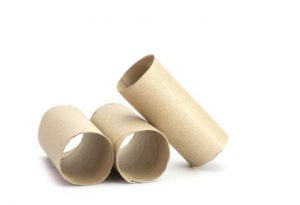
Place Your Baby on Her Back

Place Your Baby on Her Back
Since 1992, the AAP has recommended that babies be placed on their back while sleeping, and since then, SIDS deaths have declined dramatically. Babies up to 1 year of age should be placed on their backs to sleep during naps and at bedtime. If your baby rolls onto her side or stomach while she is sleeping, it’s ok to leave her in that position if she has learned to roll from her back to tummy and tummy to back on her own.
Use a Firm Sleep Surface

Use a Firm Sleep Surface
Check to make sure your crib, mattress, bassinet, and portable sleeper meet current safety standards and have not been recalled. Do not use a crib that has drop side rails. Cover the mattress with a fitted crib sheet. Do not let your baby sleep on a chair, sofa, water bed, cushion, or sheepskin. Car seats and other sitting devices are not recommended for regular sleep. If your baby falls asleep in a car seat, stroller, swing, or infant carrier or sling, move him to a firm sleep surface as soon as possible.
Don’t Use Pillows

Don’t Use Pillows
Pillows, stuffed animals, quilts, bumper pads, sheepskin, loose bedding, and loose clothing are all suffocation hazards to a sleeping baby, so keep them out of your baby’s crib and bassinet. While it is not known when it is 100% safe to let your baby sleep with these objects, most experts agree that they pose little hazard to babies over 12 months.
Sleep in the Same Room

Sleep in the Same Room
The AAP recommends keeping your baby’s crib or bassinet in the same room that you sleep to make it easier to keep an eye on her, but they do not recommend sharing a bed. While some studies have shown co-sleeping can help facilitate breastfeeding and encourage bonding, the AAP advises against it since babies who sleep in the same bed as their parents are at risk of suffocation or strangulation from loose bedding or an adult rolling over onto them. Read the pros and cons of co-sleeping, and find tips to make it safer if you choose to share a bed with your baby.
Offer a Pacifier at Bedtime

Offer a Pacifier at Bedtime
According to the AAP, offering a pacifier at naptime or bedtime can help reduce the risk of SIDS. If you are breastfeeding your baby, wait 3 to 4 weeks (or until breastfeeding is going well) before offering one. If your baby takes a pacifier and it falls out while he is sleeping, you don’t need to put it back in.
Avoid Overheating

Avoid Overheating
A general rule of thumb to follow is to dress your baby in no more than one extra layer than what you would wear. Keep your baby’s room at a comfortable temperature. Your baby may be too hot if she is sweating or if her chest feels hot. To keep her from getting too cold, look for infant sleep clothing that is designed to keep your baby warm without covering her head or face.
Do Not Rely On Home Cardiorespiratory Monitors

Do Not Rely On Home Cardiorespiratory Monitors
While home cardiorespiratory monitors have been found to be helpful for babies with breathing or heart problems, they have not been found to reduce the risk of SIDS in otherwise healthy children.
Avoid Products that Claim to Reduce Risk of SIDS

Avoid Products that Claim to Reduce Risk of SIDS
Wedges, sleep positioners, special mattresses, and other products that claim to reduce the risk of SIDS have not been found to actually do so. Additionally, these products pose a suffocation hazard.
Avoid Exposure to Secondhand Smoke

Avoid Exposure to Secondhand Smoke
Keep your baby away from people who are smoking and the areas that they smoke in. Keep your home and car smoke-free, and avoid exposure to secondhand smoke, even when you are outside.
Remember Tummy Time

Remember Tummy Time
Supervised tummy time while your baby is awake will help strengthen his neck, so he’s able to turn his head away if anything is smothering him and keep his airway open.





